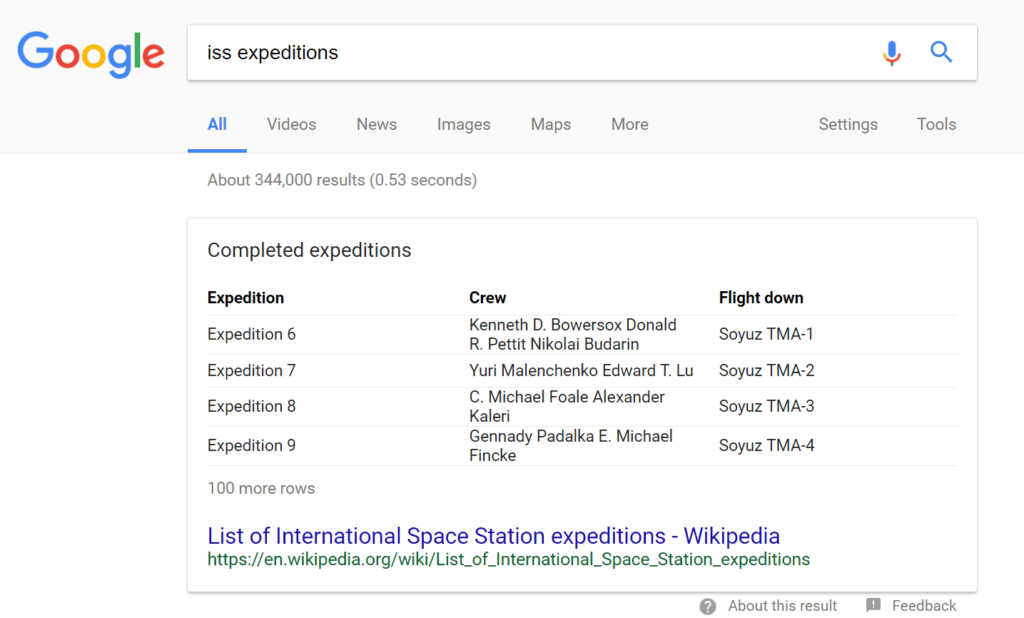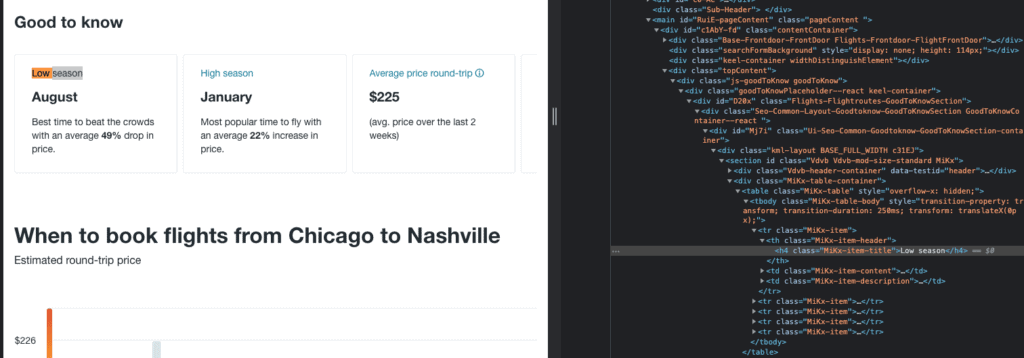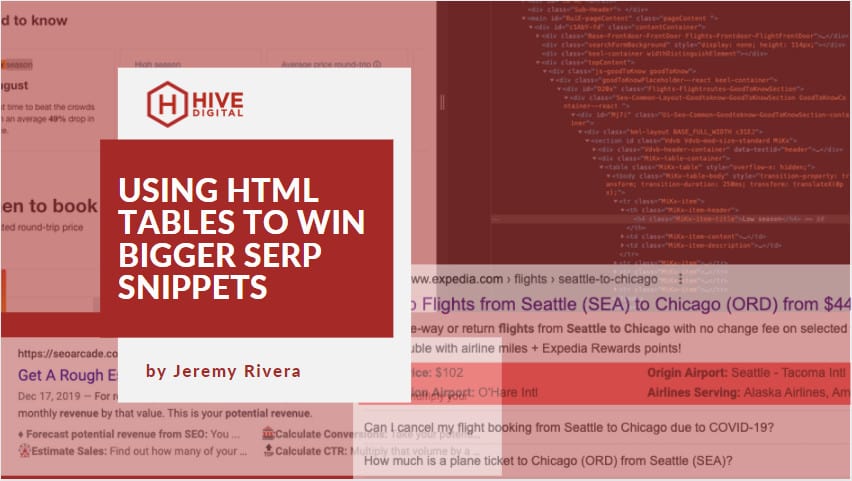When I was just a customer support representative for a hosting company, the sites we had created were essentially giant nested HTML tables. It would take 30 minutes to just move a logo a few inches because we weren’t yet using Divs and CSS, but relying on HTML tables to hold and display content. History moved on, and tables went on to be used sparingly by a handful of sites, for tables of data.
This particular SERP feature is new to me. It's basically unlinked site links. Probably similar to other features, but I hadn't seen this visual format before. @rustybrick ? pic.twitter.com/MqzqPEcgF7
— Jonas Sickler (@JonasSickler) August 20, 2021
For sometime however, Google has been mining table data to enhance Featured Snippets and Rich Answer results, along with input from bulleted and numbered lists. However, there’s a new trend in search results where ye olde HTML table is triggering an enhanced snippet result even when your site’s NOT capturing that coveted “position zero” Featured Snippet/Rich Answer.
Does Google Use HTML table Data in SERP Snippets?
Yes, currently Google can utilize content displayed within an HTML table on your website’s snippet that displays on the SERP (Search Engine Results Page). The intent of the query matters, and can change the number of cells displayed from a minimum of two rows, one column, and as many columns as it can display WITHOUT needing to wrap text to a second line, which appears to be 8 or 9.
I had originally seen someone on Twitter highlighting a ridiculous SERP by a gambling site, and in reverse engineering that result, it became obvious that their expanded SERP snippet was being fueled by an HTML table. I immediately edited a blog post I’d created on SEO traffic estimation to include a table, you can view source and see the basic nature of the table code that triggered the following SERP snippet a few days later.

As you can see, I was able to get Google to display 4 columns of the table, which included Emojis.
How Is This Different From Featured Snippets Using Table Data?

It has been known for a long time, that featured snippets in position zero could utilize data pulled not just from bulleted lists, but also from HTML tables. This new type of display is triggered for your page’s normal snippet that typically just displays your meta description and occasionally some schema markup from valid rich markup.
What Type Of Queries Are Triggering HTML Table Snippets?
Been seeing this for a long while, but it does seem to be increasing in appearance. Just off the top of my head recently, pages with specifications of some sort (auto, tech, etc) as well as even things like mountains (sea level, altitude). But not all pages with tables. Anecdotally, at least it seems to me, it mainly seems to be queries with more of a comparative or specific information-seeking search intent. – Ria Parish
I reached out to several other experts like Ria, Jonas Sickler, Cory Howell, Andy Beard and Alistair Lattimore who were able to share other examples of this SERP result, and help define some common characteristics for these HTML Table snippets.

In this example they are displaying the first four columns from a massively wide table which includes passenger volume by year – Alistair Lattimore
What Data In HTML Tables Get Selected For Snippets?
Google seems to be understanding and connecting the search intent, and does seem to be able to select and display data that comes from various rows and doesn’t seem locked to start on any particular row, just selects what’s relevant from row/column sets.
![[Cheap flights] query triggers this HTML table snippet](https://www.hivedigital.com/wp-content/uploads/2021/08/cheap-flights-html-table-snippet-example.png)
*Highlight Added* That information is on the page in a table, but there is no schema attached to it. Indicating that Google is using the table tag to identify viable data.
| # Rows Displayed | 1-4 |
|---|---|
| # Columns Displayed | 1-12 |
| Display Criteria | Matches Search Intent |
Do I Have To Have An Ugly HTML Table To Get A Snippet?
It seems that you can actually style your tabled content container, and still trigger a SERP like the one above. Check out the Expedia page, you wouldn’t even have guessed that it was actually using good ol’ fashioned HTML table code.

Share Your Unique Table Snippet Examples
We would love to see if there’s some unique or different ways that these table snippets are getting generated. If you’ve got an example to share and add to the post, hit me up via DM and I’ll include your findings.

